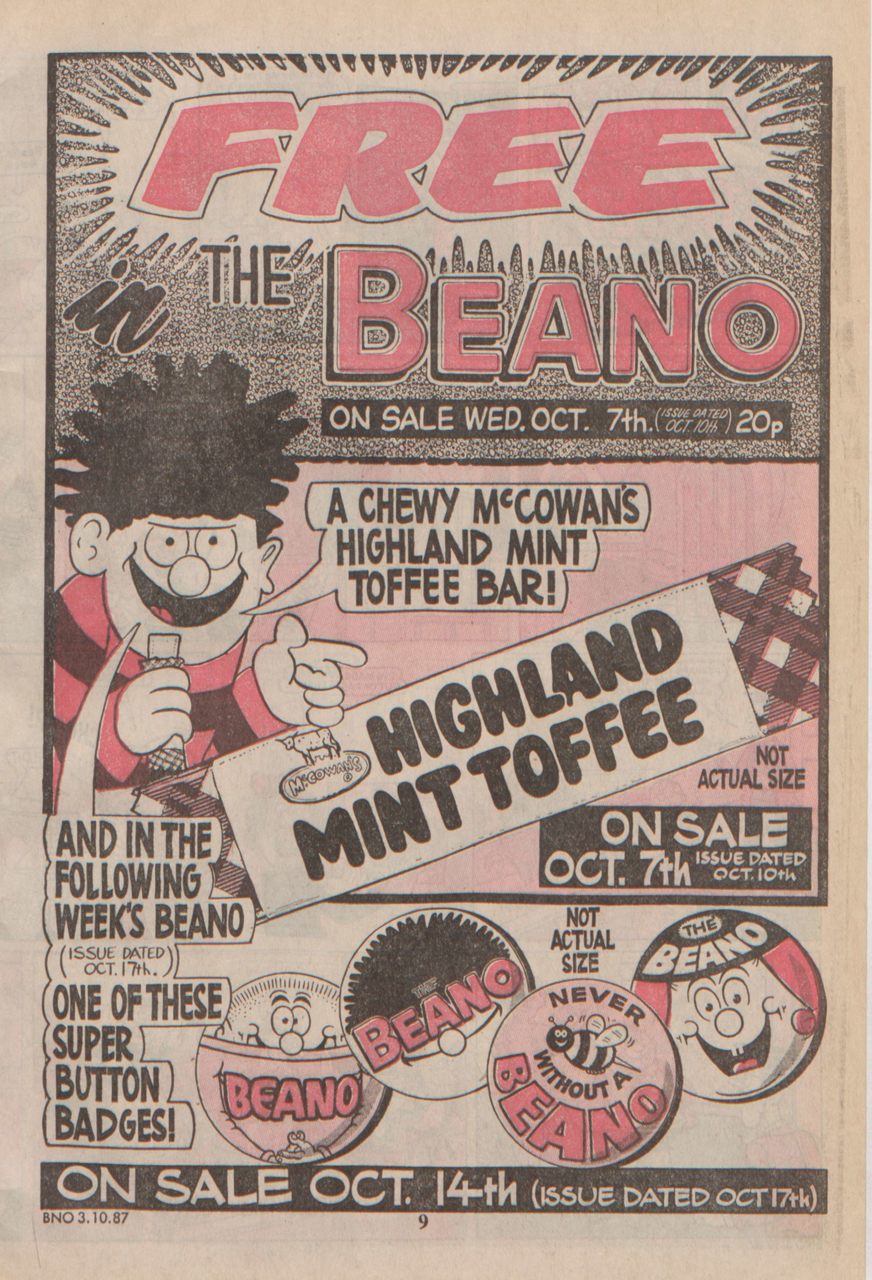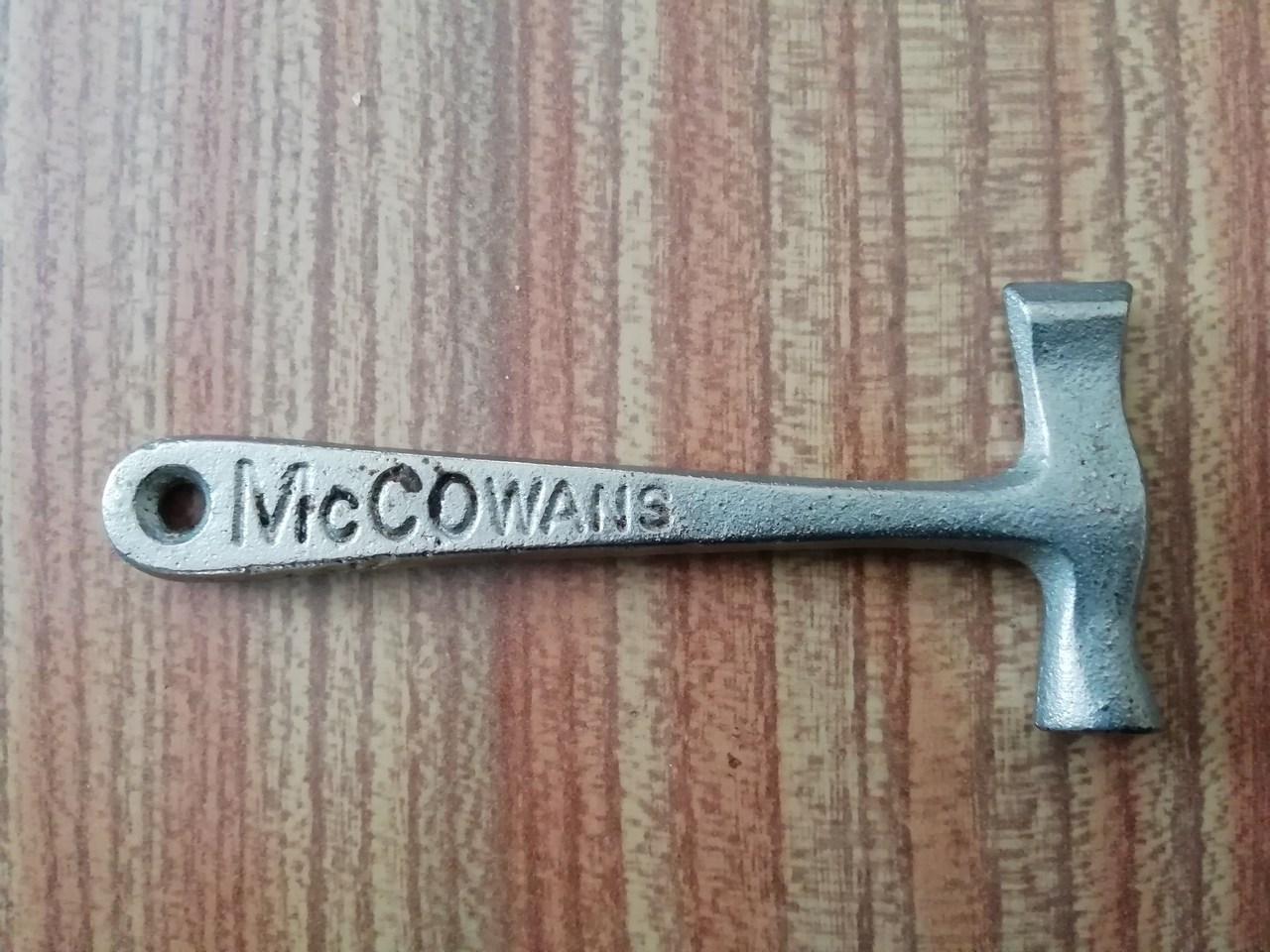Remember Wham bars? Did you know these delicious treats had a Falkirk connection? Andrew McQuaid recalls the Wham bar, and gives a little history behind this sweet success.
For a kid, buying sweets is serious business. I remember the experience well: transfixed at the sweetie counter, poring over the many wrappers, carefully weighing up the change in my pocket. Thinking back, I can sympathise with the grumpy shopkeeper who was forced to endure my indecision. But it was important to get these things right.
I knew that as soon as we left the shop my friends and I would scrutinise each others’ purchases thoroughly. The aim was to get the best sweets, but also the most sweets. A masterful balance of quality and quantity.
The choice of sweets was mind-boggling, the pocket-money scarce, and yet I remember the Wham bar as a permanent fixture. Ask anyone that grew up in Britain or Ireland in the late 1980s or early 1990s about Wham bars and you can expect to hear all about them. The internet abounds with nostalgic references to the bar as “iconic’, “retro”, and “classic.” But is the nostalgia well founded? The enduring popularity of the bar would suggest so.
Secrets of Success
What made Wham bars such a successful sweet? Affordability was certainly a factor. Priced lower than the average chocolate bar, or even a packet of sweets, there always seemed to be enough change for a Wham bar. According to Kenneth Taster, former director of McCowan’s, the company deliberately priced some of their sweets in this middle-range, between the luxury items and the penny sweets, to ensure a high volume of sales (Thompson 353). But before all that, before any pocket money calculations, the sweetie had to first catch the eye. This where the Wham bar truly excelled. Even in the 80s, when garish advertising was de rigueur, the Wham bar stood out. Consider the name itself, powerful in its simplicity. Just four letters, one syllable, representing both a sound and a sensation. It seemed to explode off the wrapper like a firework. Red lettering in block-capitals, surrounded by a jagged lines and stars, like a comic-strip explosion. Smaller captions promised “tongue tingling” and “SUPER FIZZ!” There was even a small rocket ship on the wrapper, for good measure. Inside, the bar almost glowed neon pink and, on closer inspection, was studded with mysterious coloured granules. Everything suggested excitement and drama. What child could resist?
The fact that it was nigh on impossible to remove every bit of wrapper from the bar was of little consequence; the bar was routinely devoured with strips of plastic still attached.
fields['text']) echo $section->fields['text']; ?>
The History of the Wham Bar
First manufactured in the early 1980s, the Wham bar has been around for nearly forty years. In that time, it has outlived the original McCowan’s company where it began, and passed through the ownership of some major confectionary companies, including Nestlé. According to Tangerine (the current holders of the Wham brand), the bar was once selling as many as 30 million units a year (Falkirk Herald 10 March 2016). A glance at the old Millar-McCowan website from 2005 (now archived) shows how conscious that company was of the pre-eminence of the Wham bar at the time. Their chew bar products have been separated into “Wham chew bars” and “Other chew bars,” with the Wham range now including several sizes (standard, mega, and mini), and even more flavours (raspberry, strawberry, cola, brew, apple, and cherry). This was clearly a high-water mark for the product.
Powerful though the presentation was, credit is also due to the irresistible experience of eating a Wham bar. John Millar, the founder of the Millar’s confectionary company (which merged with McCowan’s in 2005), once remarked that “sweets are first tasted with the eye, but flavour is the heart and soul of all confectionery” (Millar McCowan). At the heart of the Wham bar was a classic sweet-and-sour flavour combo, as well as contrasting chewy and fizzy textures. The bar itself was an intensely sweet, raspberry toffee but hidden within were grains of fizzy, sour sugar-crystals. This double assault on the senses was intensified by the sheer chewiness of the bar itself. McCowan’s had perfected the chew bar with their trademark Highland Toffee, but the addition of the sour sugar crystals added another dimension. It took a lot of chewing to get through a Wham bar, and every chomp was bitter-sweet. It seems that McCowan’s were well aware of this winning formula. Kenneth Taster once boasted of their ability to embed sherbet within their bars: “The only process we keep up our sleeves is how we get sherbet into some of our toffee bars. We’re the only ones who’ve managed that” (Thompson 355). Other popular McCowan’s bars that used a similar formula included the Fizzy Lizzy, which had a sherbet centre, and the Desperate Dan and Roy of the Rovers bars, which contained sweet sugar crystals. Sadly, these bars have ceased production, but the Wham bar endures.
The Wham Bar Today
When the McCowan’s company folded for good in 2011, both the Highland Toffee and Wham brands were snapped up by Tangerine. Today, Wham bars are still in production, but they’ve had to move with the times. Gone from the ingredients list are the once ubiquitous ‘e-numbers’ that became increasingly maligned by the press and public during the 1990s. Instead, the wrapper now boasts “no artificial colours & flavours” and “suitable for vegetarians.” Nevertheless, the essential character of the Wham bar remains the same. After all, you can’t change a classic.
By Andrew McQuaid, Great Place lead volunteer.

